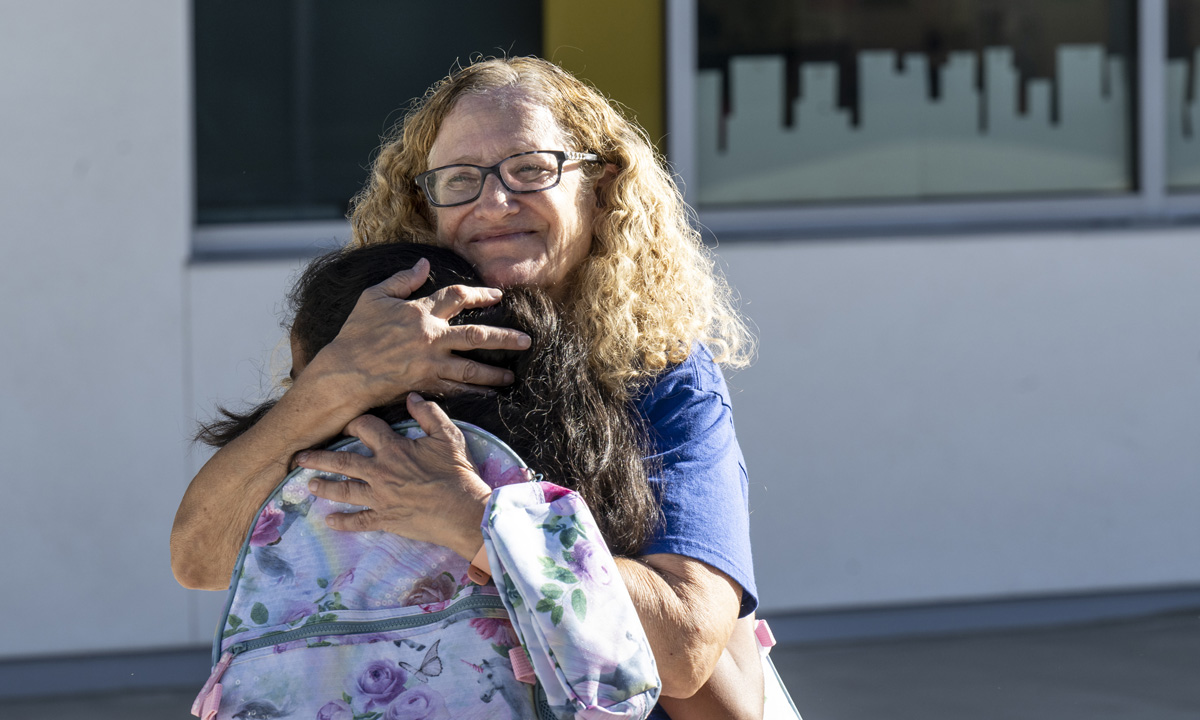How Have Schools Improved Since the Pandemic? What Teachers Had to Say
Educator's view: In technology, mental health, and nurturing and solutions-oriented environments, COVID provided lessons schools have taken to heart.

Get stories like these delivered straight to your inbox. Sign up for The 74 Newsletter
COVID-19 impacted every aspect of life, and schools are still dealing with its residual effects. Many teachers blame the pandemic for low achievement and isolation from peers as the root cause of student conflicts in schools. But are there more positive narratives to tell? In doing research for my Ph.D. program, I sought out the perspectives of five teachers through informal conversations about how schools have improved since the pandemic. Four themes emerged.
1. Technology
The first thing most teachers bring up is the improvement in technology. Not only has overall access gotten better, with many districts achieving a one-to-one ratio of devices to students, but both teachers and students have become more technologically fluent. This is especially true for educators and classrooms. According to one teacher I spoke to, schools took a five- to six-year technology jump in one year. Teachers had to adapt to online learning and were forced to learn modern instructional practices. The pandemic caused them to change their approaches to teaching in ways they might never have done if it had not been for the pandemic. Online platforms that were developed because of COVID have given teachers valuable tools for engaging students in instruction and evaluating their progress efficiently. One teacher highlighted the fact that online platforms allow educators to be more interactive with their students and more aware of their progress.
2. Nurturing
Every school district, teacher and administrator knows that the pandemic has caused students to struggle with conflict resolution and appropriate social relationships. Students were isolated from their peers, and although they were interacting online, it was easy for them to turn the camera off, mute themselves and withdraw from interactions with others. But that same technology provided educators with a window into the homes of students and a glimpse into their lives. This gave teachers a new way to truly understand what students were going through and be cognizant of their family circumstances.
Because of this newfound understanding, teachers say they have become more nurturing. Teachers realized that they had to be more aware of students’ needs, be patient with them and seek ways to support them.
3. Mental Health Needs
COVID made clear how important it is to prioritize mental health needs for both students and adults. One teacher told me how, before the pandemic, she felt it was offensive to ask parents if their child was in counseling or if they were interested in services. But now, it isn’t taboo to ask. There is a shared understanding that it is okay to not be okay, and families are more open to resources to support their children’s social-emotional needs. One teacher said he incorporates social-emotional strategies in his classroom now that he didn’t think were necessary pre-pandemic.
Another teacher said he was taking the practices he incorporates with his students and using them for himself. And as an assistant principal, I am aware of the social-emotional needs of my staff as well as the demands on them to develop each student. After the pandemic, my academic team has been more cognizant of teachers’ needs and has prioritized initiatives in order to focus on what is important.
4. Solutions-Oriented
The last significant theme that emerged is that schools have become more solutions-oriented. The teachers I spoke with agreed to stop putting the focus on the past. What is done is done. The question now needs to be, what are the solutions? The needs of students are evident, so schools must work on identifying resources to support them both academically and social-emotionally. It takes a collective effort to find solutions and make changes. Having a positive attitude and looking for good in circumstances is essential. The pandemic has given the world an opportunity to prove how resilient individuals can be.
COVID-19 posed challenges that no one in this lifetime had experienced. Returning to in-person learning and getting back to normal has proved to be difficult; however, for all the darkness of the pandemic, there are some positive effects in the nation’s schools.
Get stories like these delivered straight to your inbox. Sign up for The 74 Newsletter

